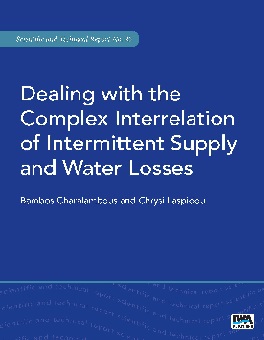About the Author
Name and title(s): Bambos Charalambous, BSc, MBA, EurIng, CEng, MICE, CEnv, FCIWEM, FIWA
Areas of expertise: Non-Revenue Water and Water Utility Governance
Questions
This year is the fifth IWA Water and Development Congress & Exhibition (WDCE 2017). Why is this event important?
The fifth IWA Water and Development Congress & Exhibition is an important event as it will address an extremely important and crucial area for emerging economies, that of Sustainability. Current systems are often by design unsustainable and not built to adapt to changes and challenges in environmental, economic or social circumstances. This inflexibility poses problems to the water sector in a fast changing world challenged by uncertainties, diminishing water resources and fast changing socio-economic conditions. The event shall bring together professionals, academics, researchers, institutions, organisations, utilities and others and provide the platform for discussions, deliberations, exchange of ideas and concepts on the above issues and challenges.
This year, the theme of the IWA WDCE is “sustainable solutions for emerging economies”. What, in your field, are some of the most important aspects of this theme?
Ensuring universal access to safe and affordable drinking water for all requires that we invest in adequate infrastructure, provide water supply facilities and encourage hygiene. Protecting and restoring water-related ecosystems such as forests, wetlands and rivers is essential if we are to mitigate water scarcity. More international cooperation is also needed to encourage water efficiency and support treatment technologies in developing countries.
The Sustainable Development Goals (SDGs) with regards to water, and more specifically SDG6 (Clean Water and Sanitation) stipulate that by 2030 universal and equitable access to safe and affordable drinking water for all is achieved. SDG6 has 8 targets including targets for drinking water (SDG6.1) and water use and scarcity (SDG6.4). The indicators relating to these 2 targets do not take into account the intermittency of drinking water supply, its magnitude, or its consequences for the population. The SDGs mark a major step in providing a decent life for all mankind, but in the case of drinking water supply, the complex reality around the world clearly goes beyond the actual definitions and requires further analysis and recommendations in order to respond to real situations. As water experts and professionals, it is our duty to pave the road for improving Intermittent Water Supply and ultimately transition to continuous supply.
What, for you, is the most significant or exciting research area in water and development today?
Water is undisputedly a necessity required for the survival and prosperity of communities. Too much or too little water has been the cause of destruction, war, starvation, poverty and disease in many countries. Worldwide uneven water distribution and quality issues, in conjunction with rapid urbanisation are increasingly becoming ubiquitous especially in developing countries. With the addition of climate change, population increase and displaced populations due to national and regional conflicts, improving living standards and boosting prosperity is challenging. There is a need for integration of water sources by adopting a transdisciplinary approach, merging fields such as urban planning, policy drafting and implementation, technology development and social outreach, while addressing both the community (city) scale and the watershed scale. Many aid organisations have and still do relieve people and communities from immediate and short-term emergencies and problems. However, long-term solutions need to be given to these communities so they can do for themselves. To assist countries in becoming self-sustainable means to provide them with the tools and knowledge and the financial resources, where required, so that they can be capacitated and able to adapt to their local environmental conditions. It is important that water utilities become resilient which requires that they have the ability to resist, absorb, accommodate and recover from extreme situations, such as droughts, in a timely, efficient and sustainable manner. It is therefore imperative that water utilities are developed with the potential for self-learning and adapting to ecological, environmental and climate conditions that make the existing systems untenable. They must become agile, maximising operational efficiency, responding effectively to changes and reacting to customers’ needs.
Featured author content for WDCE:
Dealing with the Complex Interrelation of Intermittent Supply and Water Losses
